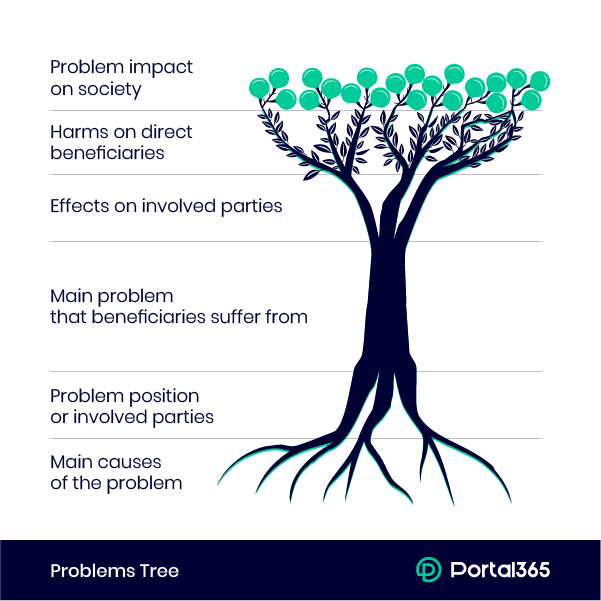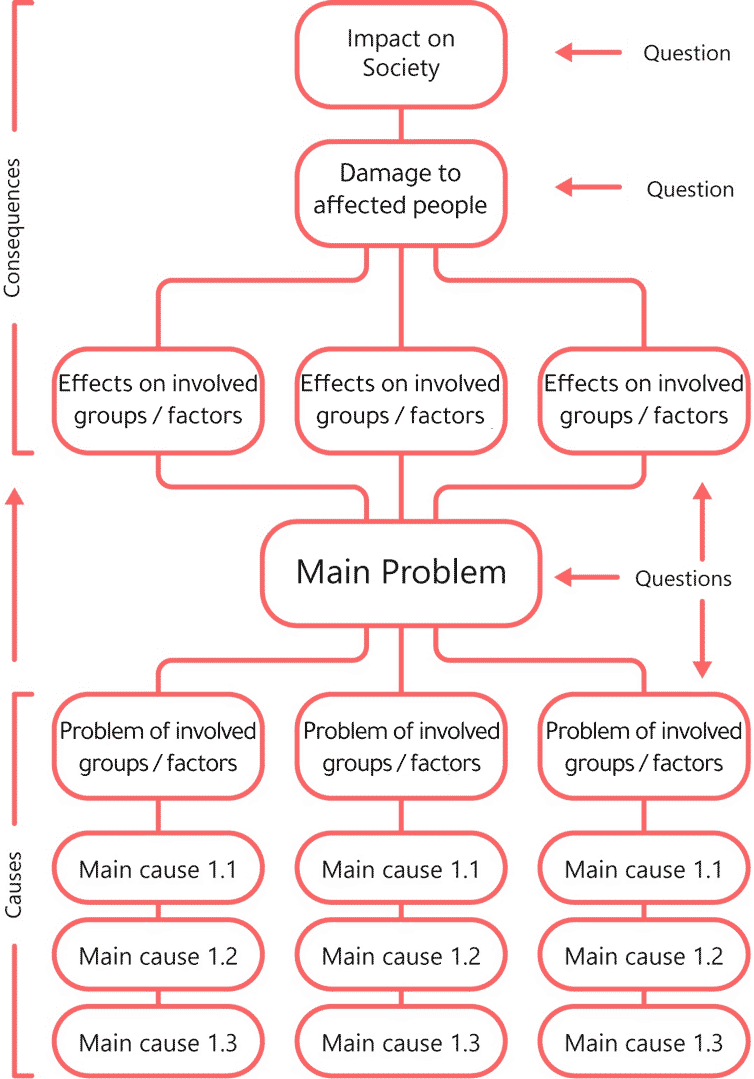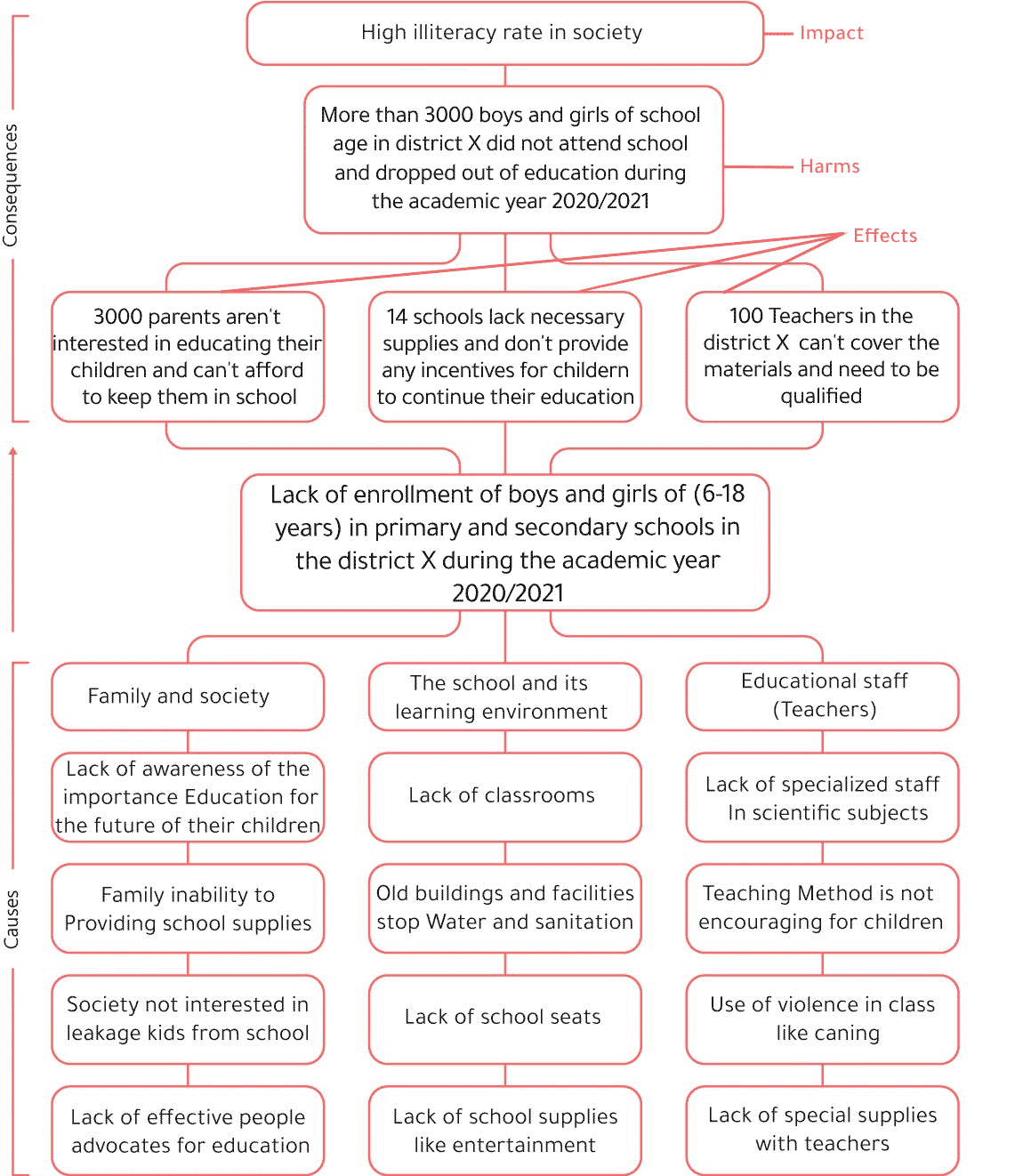Articles and How-to Tutorials for NGOs
Needs Assessment (Analyzing The Problem)
Written by Adel SalahAs we mentioned previously, the needs assessment process consists of five stages, and in this article will talk about the third stage of this process.
Problem Analysis
Through numerous practical experiences in writing project proposals, we recommend using the problem tree because it helps in analyzing problems in a logical and simplified way, as well as, facilitates making a logical draft of all subsequent stages of the project.
Problem Tree
Is a model that comes from analyzing the problem in the form of a tree, starting from roots to fruits. When drawing the tree, we should bear in mind the next points:
Tree stalk: Main problem.
Main roots: Groups responsible for the problem and affecting it ( service providers, protection committees, local authority, community)
Secondary roots: Direct main reasons that led to the problem.
Tree branches: The initial impact on groups responsible for the problem, who affect the problem.
Tree leaves: Damage suffered by people or a group of them because of effects of the groups responsible for the problem.
Tree fruits: What can the damage leave on the targeted community as a whole.

The problem tree and its use to illustrate how to analyze problems
Using problem tree helps to identify the problems of the targeted groups as well as the needs of the targeted community. If the problem tree is done correctly, it will help the writer of the proposal to understand the logical sequence of the project and write the theory of change or the logical frame easily with greater confidence.
When analyzing the problem tree quickly especially for beginners in proposal writing, the analysis can lead them to side issues which are not directly connected to the main problem and result in adopting inapplicable and illogical activities that will not solve the problem and will not get the desired results by the end of the project.
Therefore, we have to focus on the direct causes that led to the problem and not to go after the indirect causes which are usually immeasurable and unspecific. Also, we should not confuse between damages and impacts of the problem (tree branches and fruits) and the causes that led to it (tree roots). When analyzing the causes of the problem, we have to concentrate on the direct causes first then we can move to the indirect causes.

Figure above: The main problem diagram in a project proposal using the problem tree

Figure above: Example of the main problem in a project proposal using the problem tree